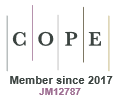Just Accepted
This article has been peer reviewed and accepted for publication. It is in production and has not been edited, so may differ from the final published form.
Ultrasound-assisted deep-eutectic-solvent-based dispersive liquid–liquid microextraction for lead detection in high-salt foods: A green analytical strategy for overcoming sodium chloride interference
Abstract
In this study, an accurate and applicable analytical method was constructed by microextraction-based deep eutectic solvent (DES)–graphite furnace atomic absorption spectrometry to determine trace Pb(II) in high-salt foods. A synergistic microextraction procedure was developed to eliminate sodium chloride interference by combining selective Pb(II) chelation with dithiophosphate, hydrophobic DES to block NaCl migration, and low-temperature solidification for matrix purification. Under optimum conditions, the method exhibited a linear range of 0.15–100 μg L−¹, a detection limit of 1.25 μg kg−¹, the relative standard deviations (RSDs) were between 2.04% and 3.56%, and an enrichment factor of 49.5 while tolerating 2% (w/v) NaCl interference. By effectively overcoming matrix interference, the optimized method was successfully used in high-salt foods such as hotpot base, pickled kelp, chicken essence, and soy sauce, providing a sensitive, selective, and cost-effective strategy for trace lead detection for complex food matrixes.
CH25084 Accepted 29 September 2025
© CSIRO 2025



